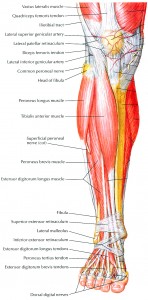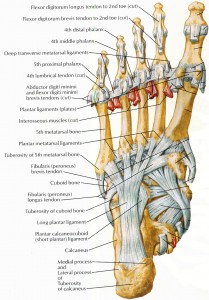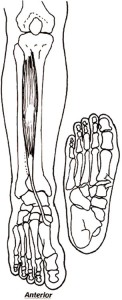We are going to look at the muscles that are responsible for the effective use and stability of the foot’s arches.
The body has a series of pulleys systems inside which allow certain difficult actions to be accomplished.
The pulley of the ankle bone lifts the arches of the feet using the muscles of the lower leg to lift the bones of the foot into their functional positions.
An arch is a load-supporting structure that is formed by two or more pillars moving toward each other. Arches are held up and together by a keystone that wedges in the middle of the pillars stabilizing the structure.
A big problem that we have as moveable structures is the load above the arches (there are arches in the pelvis as well) isn’t always well-centered. Good posture is a body that sits directly on top of its arches. Bad posture is the leaning tower of Pisa—a structure able to stand but not doing so in the most effective of ways.
We’ll start by looking at the outer and the transverse arches of the feet— two muscles essentially hoist up these two arches.
The fibularis muscles, brevis, and longus start their descent to the foot on the outside of the shin. The Fibularis longus begins just below the knee and brevis starts a couple of inches below that.
To see where they go you can look at your bare foot where you will see the fifth metatarsal, a little knob of bone in the middle of the outer foot.
This is the bone that the fibularis brevis attaches to, and this is the keystone of the outer arch. When fibularis brevis engages successfully the outer arch will lift.
For fibularis brevis and fibularis longus to reach their destinations they have to curl around the knobby bone of the ankle (pic 2). The ankle bone acts as the pulley and the calf muscles are the rope, providing the extra force needed to hoist the arches.
Fibularis longus lengthens down from just below the knee (pic 1). It passes peroneus brevis and turns under the foot.
It will journey all the way under the foot to attach to the mound of the big toe (pic 3). This muscle extending all the way down from the knee to the big toe is largely responsible for the successful use of the transverse arch.
Things get a little bit more complicated when we move to the more weight-bearing inner arch.
This arch really bears all of the body’s weight when our body is standing with good posture so instead of one muscle holding it up we have four muscles involved—though one, tibialis posterior (pic 4) is doing most of the work with the help of tibialis anterior (pic 5) at the front.
Together these two muscles (And two others as well) form a sort of stirrup around the foot and with the pulley of the ankle bone, lift up the inner arch of the foot upon which all of our weight rests.
For the most part, four muscles are responsible for how well our feet serve us:
- Tibialis posterior (inner arch)
- Tibialis anterior (inner arch)
- Fibularis longus (transverse arch)
- Fibularis brevis (outer arch)
The body is a series of arches, hinges, and pulleys designed to make us function at optimal levels. The quality of our posture and the tone of our muscles determine how well the machine runs. Aligning the bones correctly to use the muscles as they were designed will take us a long way towards a happy old age but you have to learn about the mechanics of the machine in order to use it correctly.
***





